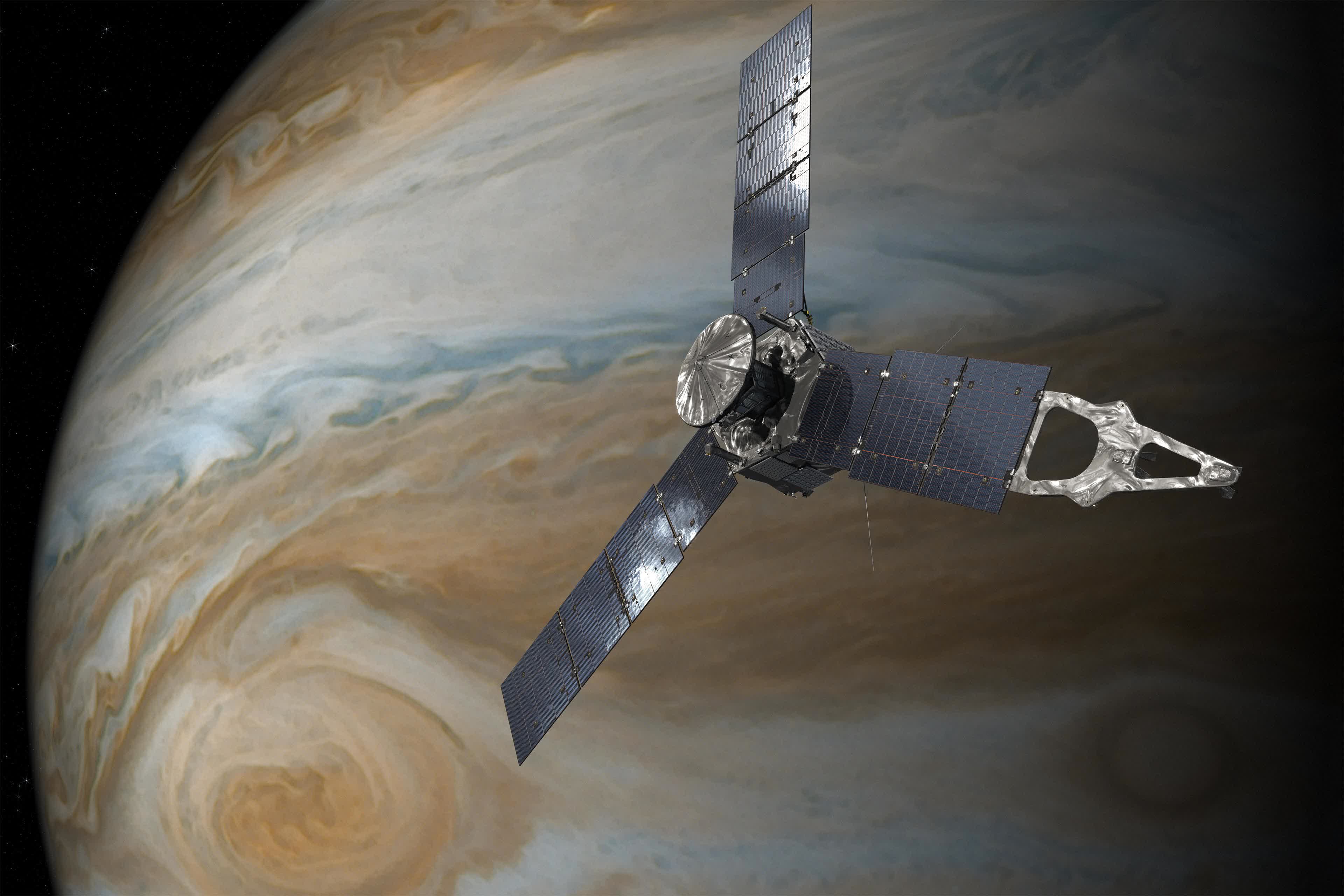What just happened? The James Webb Space Telescope has been getting the lion's share of attention lately but it's not the only NASA craft actively exploring the cosmos. The Juno space probe has sent back the first image it captured as it flew by Jupiter's icy moon Europa, the sixth-largest moon in our solar system. Europa is a little smaller than our own satellite and is believed to host a salty ocean below its miles-thick ice shell.
Juno launched from Cape Canaveral on August 5, 2011, and entered Jupiter's orbit on July 5, 2016. In 2021, the probe sent back its first images of Ganymede, Jupiter's largest moon. During the flyby of Europa on September 29, the probe came within about 219 miles of the icy moon. It was only the third close pass below 310 miles altitude and represents the closest look at Europa since NASA's Galileo buzzed Europa in 2000.
The probe did not have much time to waste as it zipped by the moon at about 14.7 miles per second, or 52,920 mph. Its onboard JunoCam focused on a region north of the moon's equator called Annwn Regio.
Scott Bolton, Juno principal investigator from Southwest Research Institute in San Antonio, said it is still early but all indications suggest the flyby was a great success.
Candy Hansen, a Juno co-investigator who leads planning for the camera at the Planetary Science Institute, said the science team will be comparing the full set of images from Juno with those from previous missions to determine if the moon's surface has changed over the past two decades. "The JunoCam images will fill in the current geologic map, replacing existing low-resolution coverage of the area.," Hansen added.
Images are coming back and being processed from our #JunoMission's early-morning flyby---the closest look at Jupiter's ice-encrusted moon in more than 20 years.
--- NASA (@NASA) September 29, 2022
Here's what we're seeing so far. We'll be back with fully-processed images soon. https://t.co/NIUkiz2mTe pic.twitter.com/pPiK3cv5bL
The images and supporting science data will also help the team learn more about the moon's icy shell, its interior and surface composition, its ionosphere and the interaction between the moon and Jupiter's magnetosphere.
Additional, unprocessed images from the flyby are available on NASA's website.

